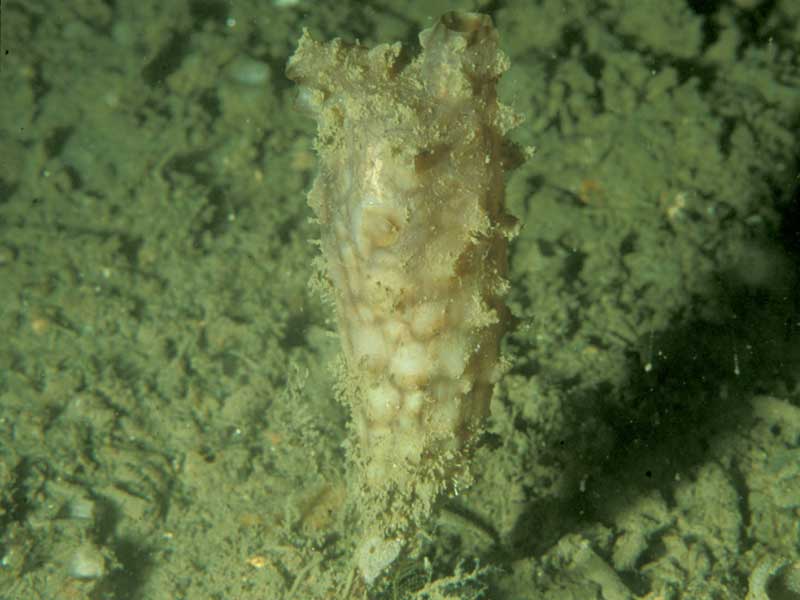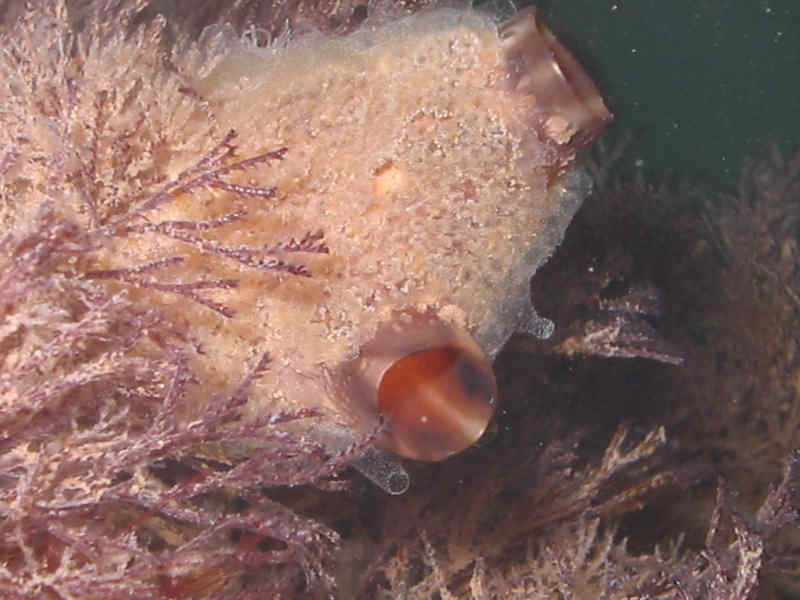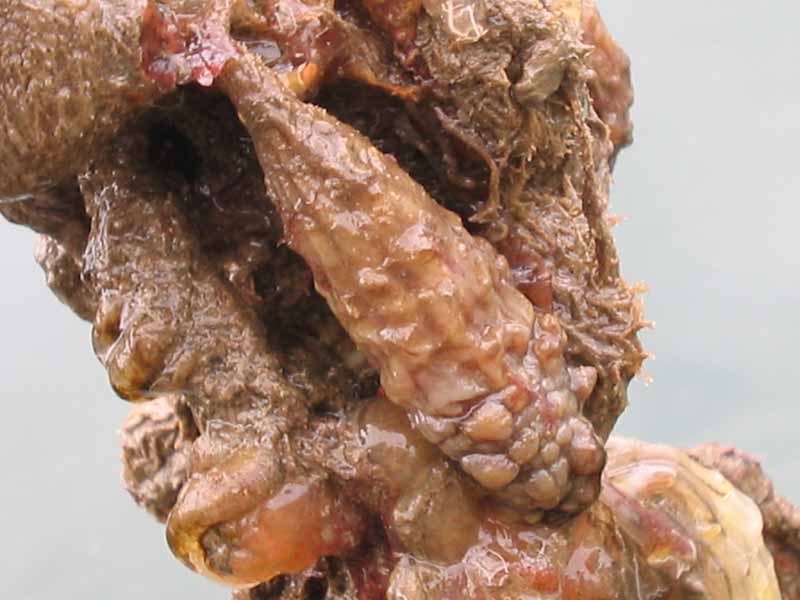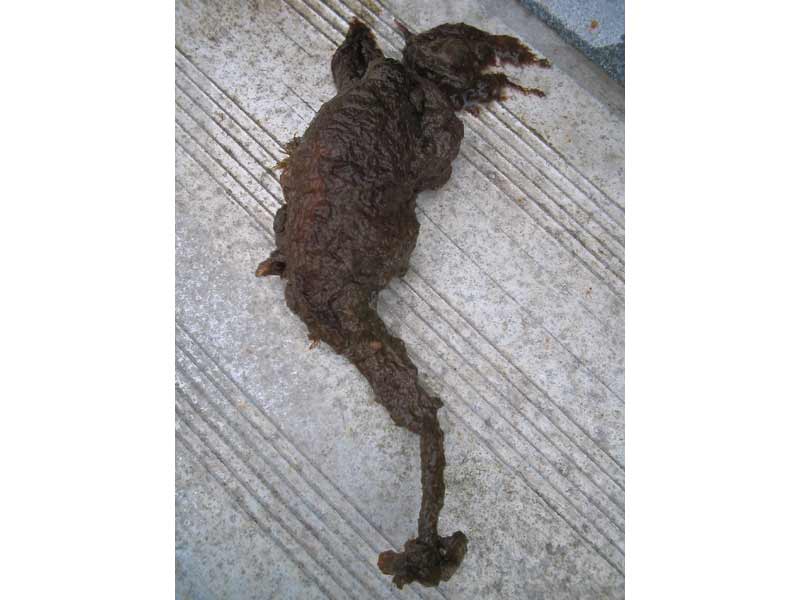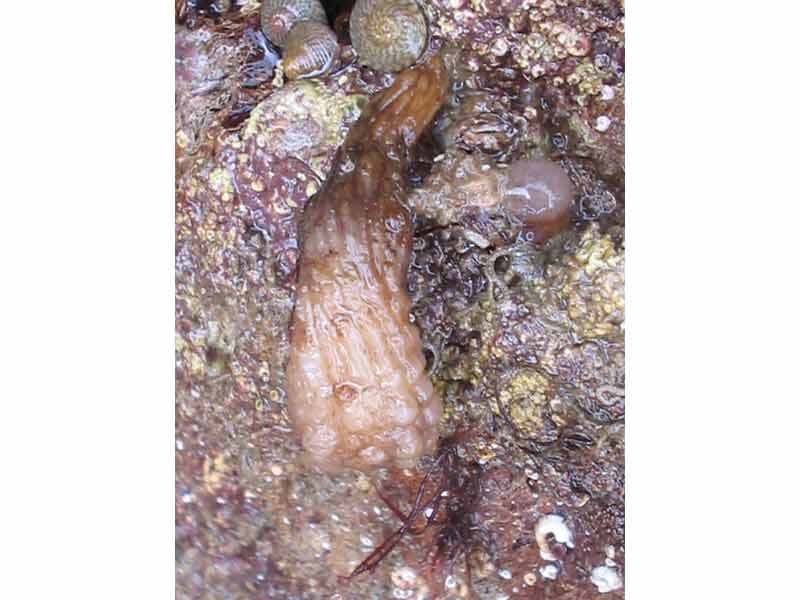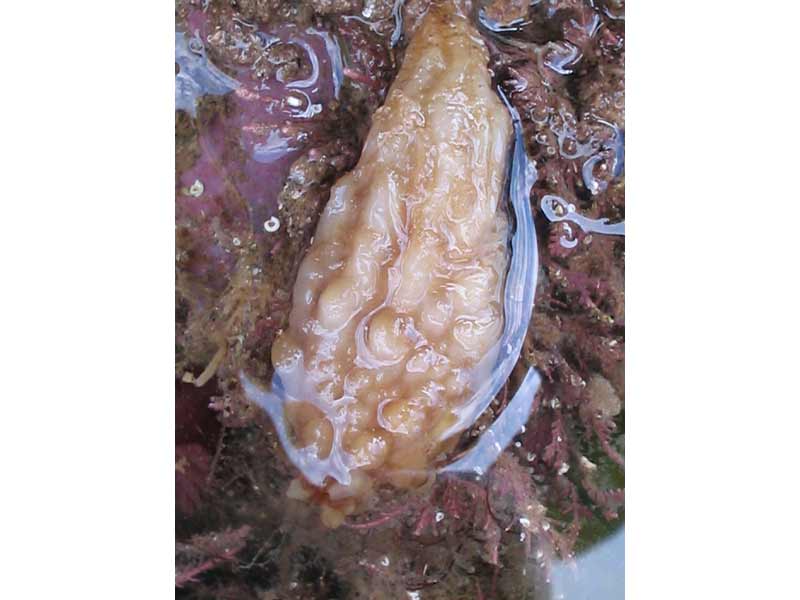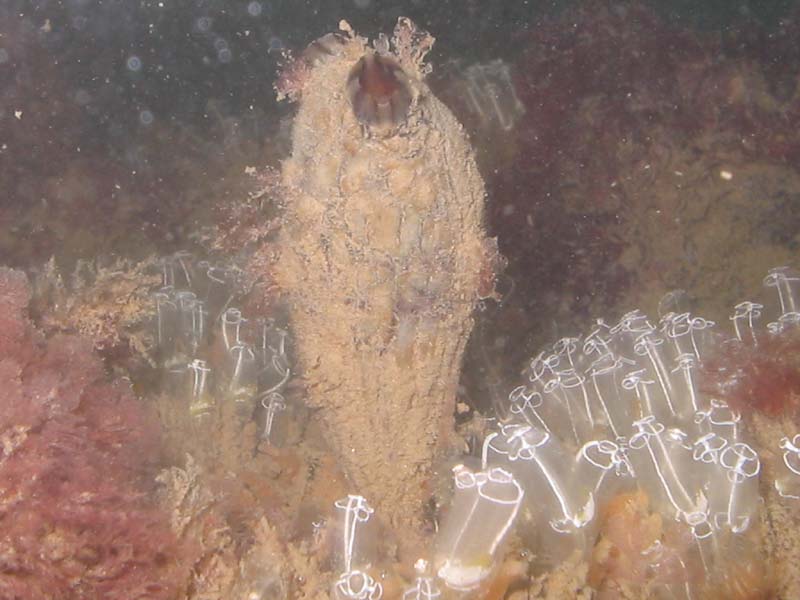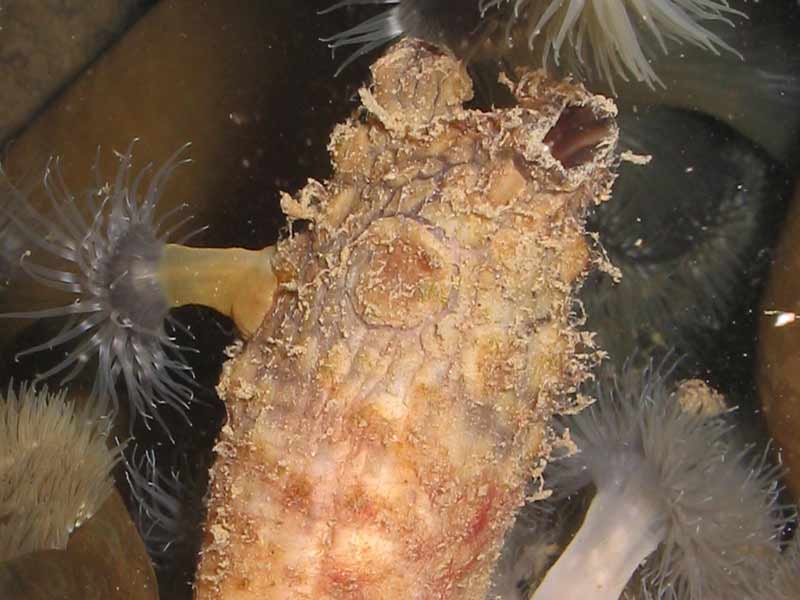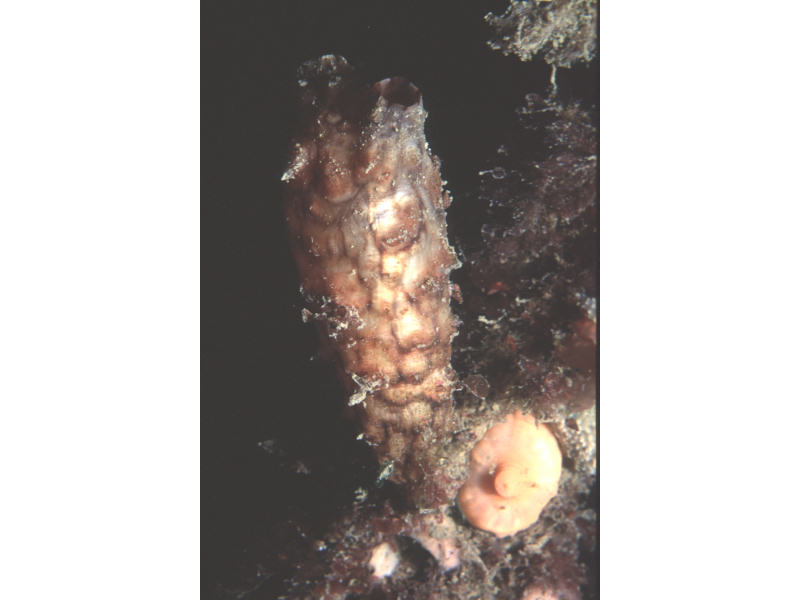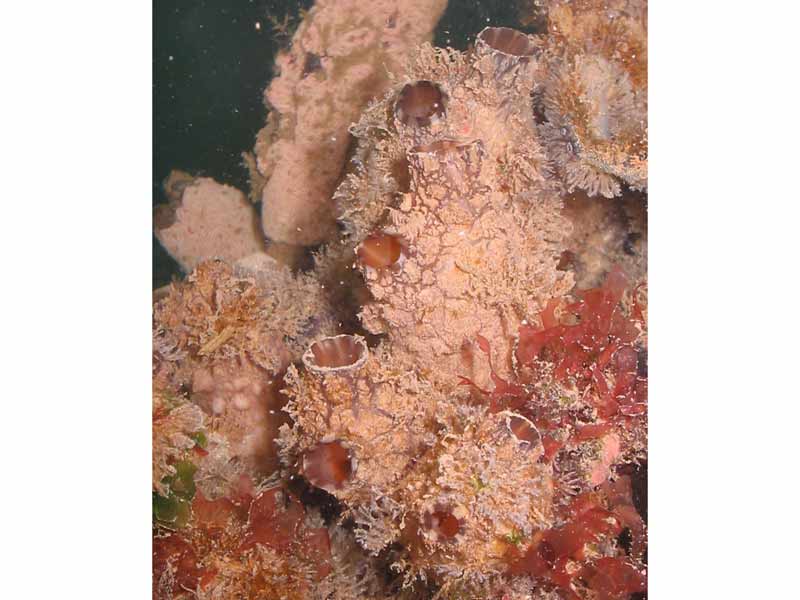Leathery sea squirt (Styela clava)
Distribution data supplied by the Ocean Biodiversity Information System (OBIS). To interrogate UK data visit the NBN Atlas.Map Help
| Researched by | Anna Neish | Refereed by | Admin |
| Authority | Herdman, 1881 | ||
| Other common names | - | Synonyms | Styela mammiculata Herdman, 1881 |
Summary
Description
A solitary sea squirt with a long club-shaped body, tapering to a slender and tough stalk. The overall height of the sea squirt can reach 12cm and the stalk can be a 1/3 of the total length. The surface of the sea squirt can be leathery with folds and swellings. The siphons at the top (anterior) end are close together.
Recorded distribution in Britain and Ireland
Styela clava is distributed on the south and west coasts of England as far north as Cumbria. It has also been found in Loch Ryan and Androssan marina, Scotland, in Cork and Fenit Harbours, Ireland, and the Channel Isles.
Global distribution
It is a native of the north western Pacific and found in Japan, Korea and Siberia. It is also now found in France, The Netherlands, Denmark and Ireland.
Habitat
Styela clava is found in shallow water on hard surfaces and occurs abundantly in sheltered warm water docks and harbour installations.
Depth range
-Identifying features
- Body long, narrow and club-shaped.
- Slender tough stalk can be 1/3 of total length.
- Total length up to 12 cm.
- Surface leathery with folds and swellings.
- Siphons at anterior end close together.
- 2-4 gonads on left-side and 5-8 on right, each with a long narrow ovary surrounded by male follicles.
Additional information
Styela clava is a non native marine species originally from the north western Pacific. It was found in Plymouth Devon in 1953 (Carlisle, 1954) and was possibly introduced on the hulls of war ships following the end of the Korean war in 1951. Styela clava is a fouling pest on ships hulls and oyster beds, and the transport of oysters and any movement of ships probably aided its rapid dispersal (Eno et al., 1997). The distribution of Styela clava was examined recently by Davis & Davis (2004). They reported another 40 new records of this species in European harbours, including new records in the Channel Isles, France and Spain. A similar sea squirt, Styela gelatinosa has only been found in one location and is easily separated from Styela clava by its narrow base or slight stalk.
Listed by
- none -
Bibliography
Carlisle, D.B., 1954. Styela mammiculata, a new species of ascidian from the Plymouth area. Journal of the Marine Biological Association of the United Kingdom, 33, 329-334.
Davis, M.H. & Davis, M.E., 2004. New records of Styela clava Herdman, 1882 (Tunicata, Ascidiacea) in Europe. Porcupine Marine Natural History Society Newsletter, 14, 24-27.
Eno, N.C., Clark, R.A. & Sanderson, W.G. (ed.) 1997. Non-native marine species in British waters: a review and directory. Peterborough: Joint Nature Conservation Committee.
Hayward, P., Nelson-Smith, T. & Shields, C. 1996. Collins pocket guide. Sea shore of Britain and northern Europe. London: HarperCollins.
Hayward, P.J. & Ryland, J.S. (ed.) 1995b. Handbook of the marine fauna of North-West Europe. Oxford: Oxford University Press.
Millar, R.H., 1970. British Ascidians London: Academic Press.[Synopses of the British Fauna, no. 1.]
Minchin, D., & Duggan, C.B., 1988. The distribution of the exotic ascidian, Styela clava Herdman, in Cork Harbour. Irish Naturalists' Journal, 22,388-393.
Datasets
Centre for Environmental Data and Recording, 2018. Ulster Museum Marine Surveys of Northern Ireland Coastal Waters. Occurrence dataset https://www.nmni.com/CEDaR/CEDaR-Centre-for-Environmental-Data-and-Recording.aspx accessed via NBNAtlas.org on 2018-09-25.
Fenwick, 2018. Aphotomarine. Occurrence dataset http://www.aphotomarine.com/index.html Accessed via NBNAtlas.org on 2018-10-01
Kent Wildlife Trust, 2018. Kent Wildlife Trust Shoresearch Intertidal Survey 2004 onwards. Occurrence dataset: https://www.kentwildlifetrust.org.uk/ accessed via NBNAtlas.org on 2018-10-01.
Merseyside BioBank., 2018. Merseyside BioBank (unverified). Occurrence dataset: https://doi.org/10.15468/iou2ld accessed via GBIF.org on 2018-10-01.
National Trust, 2017. National Trust Species Records. Occurrence dataset: https://doi.org/10.15468/opc6g1 accessed via GBIF.org on 2018-10-01.
Nature Locator, 2017. Sealife Tracker. Occurrence dataset: https://doi.org/10.15468/qgk3pg accessed via GBIF.org on 2018-10-01.
NBN (National Biodiversity Network) Atlas. Available from: https://www.nbnatlas.org.
OBIS (Ocean Biodiversity Information System), 2025. Global map of species distribution using gridded data. Available from: Ocean Biogeographic Information System. www.iobis.org. Accessed: 2025-08-14
South East Wales Biodiversity Records Centre, 2018. INNS Data: All Taxa (South East Wales). Occurrence dataset: https://doi.org/10.15468/crhjs2 accessed via GBIF.org on 2018-10-02.
South East Wales Biodiversity Records Centre, 2023. SEWBReC Marine and other Aquatic Invertebrates (South East Wales). Occurrence dataset:https://doi.org/10.15468/zxy1n6 accessed via GBIF.org on 2024-09-27.
West Wales Biodiversity Information Centre, 2018. INNS Data: All Taxa (West Wales). Occurrence dataset: https://doi.org/10.15468/ydifzd accessed via GBIF.org on 2018-10-02.
Citation
This review can be cited as:
Last Updated: 23/08/2007

